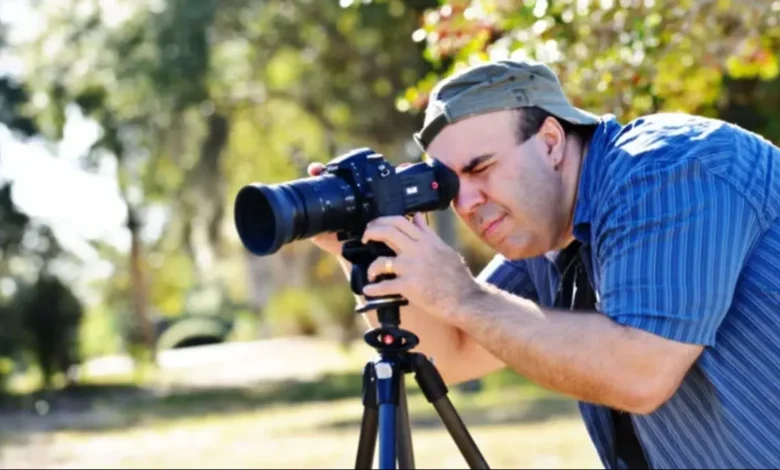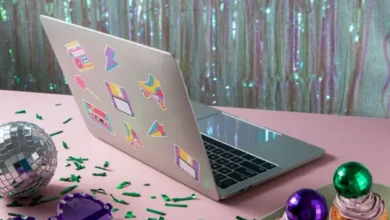Lens Flare 101: Tips and Tricks for Photographers photeeq Lens Flare

Lens flare can be a polarizing topic among photographers. Some see it as a nuisance, while others view it as an opportunity for creativity. Those shimmering light spots can add depth and drama to your images or thoroughly wash them out if improperly handled. Yet, when used intentionally, lens flare has the potential to elevate your photography game to new heights.
In this guide, we’ll explore how you can harness the power of photeeq lens flare in your work. From understanding its nature to incorporating it effectively in your shots, we have tips and tricks to transform how you approach this fascinating phenomenon. Whether shooting landscapes at sunset or capturing candid moments with friends, you’ll discover ways to make lens flare work for you rather than against you. So grab your camera, and let’s dive into the world of lens flare!
Understanding photeeq lens flare
Lens flare occurs when bright light sources hit the lens directly, photeeq lens flare scattering light and creating distinctive spots or streaks in your image. This optical effect is not just a byproduct of shooting into the sun; it’s a natural interaction between light and glass.
Understanding how this phenomenon works can help you make informed decisions while photographing. The quality of lens flare varies based on factors like lens design, coatings, and aperture settings.
Some lenses produce softer flares with gentle bursts of color, while others create harsher lines that can dominate an image.
By grasping these nuances, photographers can manipulate conditions to achieve desired effects. It’s all about knowing how to control the elements at play—light direction, time of day, and subject placement are crucial for maximizing creative potential.
Types of Lens Flare
Lens flare comes in various forms, each adding a unique touch to your images. The most common type is the ghosting effect, where bright spots appear as halos around light sources. This creates an ethereal vibe that can enhance mood.
Another type is streak lens flare, characterized by elongated rays extending from a light source. These dramatic lines introduce movement and energy into a static scene, making them perfect for dynamic photography.photeeq lens flareAnother type is streak lens flare, characterized by elongated rays extending from a light source. These dramatic lines introduce movement and energy into a static scene, making them perfect for dynamic photography.
You might also encounter colored flares. Here, different hues emerge due to reflections within the lens elements, adding vibrancy and intrigue to photographs.
Soft Lena’s flare produces gentle glows or veils of light without harsh edges. It delivers a dreamy quality that can evoke nostalgia or emotion in portraits or landscapes. Understanding these types lets photographers choose the right flair for their artistic vision.
How to Incorporate Lens Flare in Your Photos
To incorporate lens flare in your photos, start by positioning yourself with the light source behind your subject. This creates a natural pathway for the rays to enter your lens.
Experiment with different angles. A slight shift can drastically change the flare’s appearance, adding depth and drama to your shot. photeeq lens flare Don’t be afraid to play around until you find that perfect spot.
If possible, use manual settings on your camera. Adjusting the aperture and shutter speed allows greater control over how much light enters, which can enhance or diminish flare effects.
Consider using filters as well. They can help manage unwanted flares while enhancing photeeq lens flare artistic ones that complement your composition.
Post-processing is key. Software like Adobe Lightroom or Photoshop lets you fine-tune the intensity of lens flare, ensuring it harmonizes perfectly with other elements of your image without overwhelming them.
Tools and Techniques for Creating Lens Flare
You don’t need a fancy camera to create stunning lens flare effects. Start with your smartphone or DSLR. The key is understanding light and how it interacts with your lens.
Experimenting with different angles can yield surprising results. Position yourself so that the sun or another bright light source hits your lens at an angle. A slight tilt can dramatically change the flare’s appearance.photeeq lens flareExperimenting with different angles can yield surprising results. Position yourself so that the sun or another bright light source hits your lens at an angle. A slight tilt can dramatically change the flare’s appearance.
Filters can also enhance these effects. Consider using UV filters to soften harsh lights or polarizing filters for more control over reflections.
Post-processing software like Adobe Lightroom or Photoshop allows further flare intensity and color balance manipulation. If natural flares don’t meet your expectations, you can add them digitally.
Practice makes perfect. Take various shots in different lighting conditions to see how each setting impacts the outcome. Each click brings you closer to mastering photeeq lens flare techniques.
Common Mistakes to Avoid with Lens Flare
When working with lens flare, it’s easy to get carried away. photeeq lens flare One common mistake is overdoing it. Too much flare can overwhelm your subject and distract from the image’s primary focus.
Another pitfall is misplacing the light source. Positioning it too centrally can create an unflattering effect. Instead, try experimenting with off-center placements for a more dynamic look.
Failing to consider lighting conditions also leads to issues. Harsh sunlight can produce unwanted artifacts or washed-out colors in your photos.
Ignoring post-processing techniques may also hinder your final result. Adjustments in editing software like Photeeq can enhance flares without compromising other elements of your photo.
Don’tRemember composition! Make sure that any lens flare you incorporate doesn’t clash with other aspects of your shot but beautifully complements them.
Creative Uses of Lens Flare in Photography
Lens flare can transform a mundane photo into something magical. When used creatively, it adds depth and emotion to your images. photeeq lens flare.
Many photographers harness its power for storytelling. A soft halo around a subject can evoke nostalgia or dreaminess, making the viewer feel more connected to the moment captured.
Lens flare can enhance natural light in portrait photography. Positioning your subject against the sun allows for vibrant streaks of color that frame their face beautifully.
Landscape shots benefit too. Flare enhances sunsets or sunrises by adding dynamic elements that highlight textures and colors in nature.
Experimentation is vital with lens flare. Try different angles and lighting conditions to discover unique effects specific to your style. You might find surprising results that elevate your work beyond expectations.
Let your creativity flow freely when incorporating photeeq lens flare into your photography adventures, allowing each shot to tell its own story through light and shadow.
Conclusion
Lens flare can be a captivating element in photography when used correctly. Understanding how it works, the different types available, and the tools you have at your disposal opens up a world of creative possibilities. By incorporating lens flare thoughtfully into your images, you can elevate their emotional impact and aesthetic appeal.
photeeq lens flare Avoiding common mistakes is equally important to ensure that lens flare enhances rather than distracts from your subject. With practice and experimentation, you’ll find ways to make photeeq lens flare a signature style in your work. Embrace this unique aspect of photography; let it inspire new ideas and fresh perspectives on capturing light in all its forms. Keep exploring, keep shooting!





